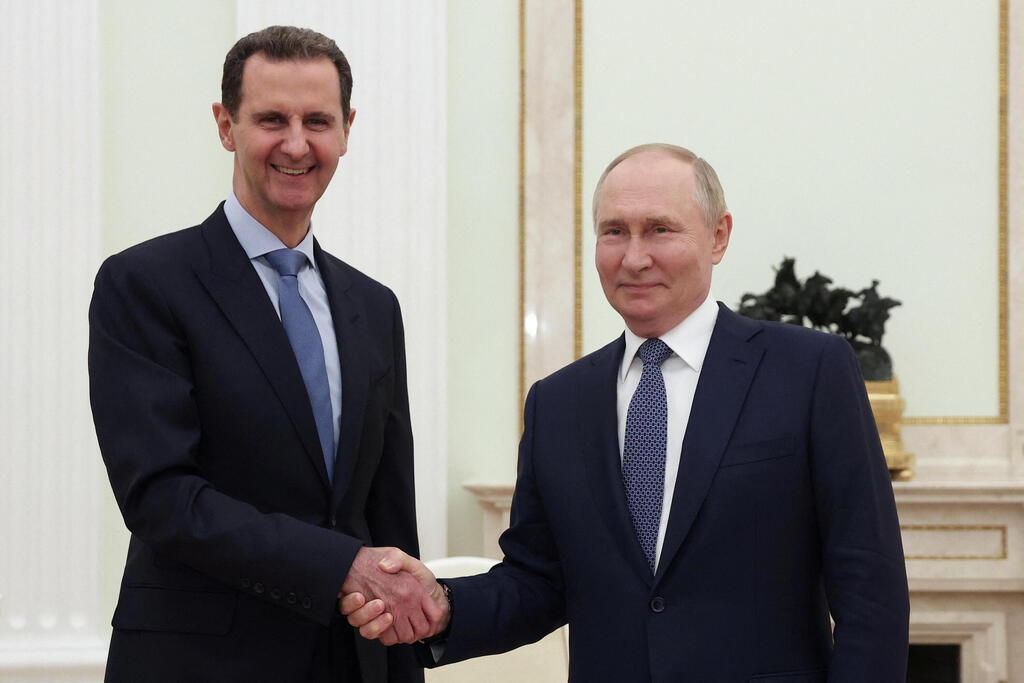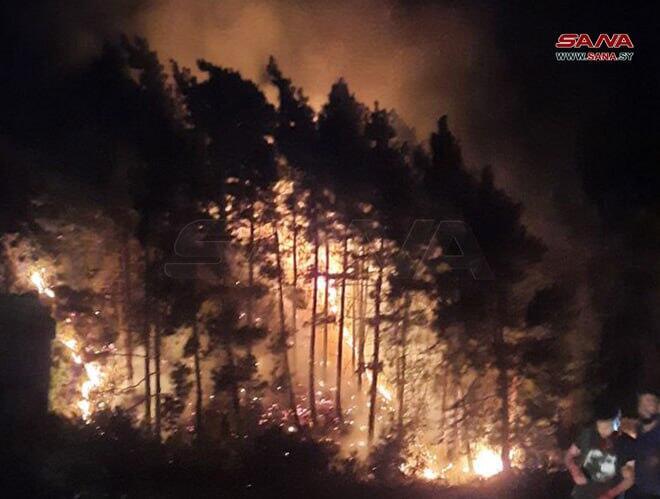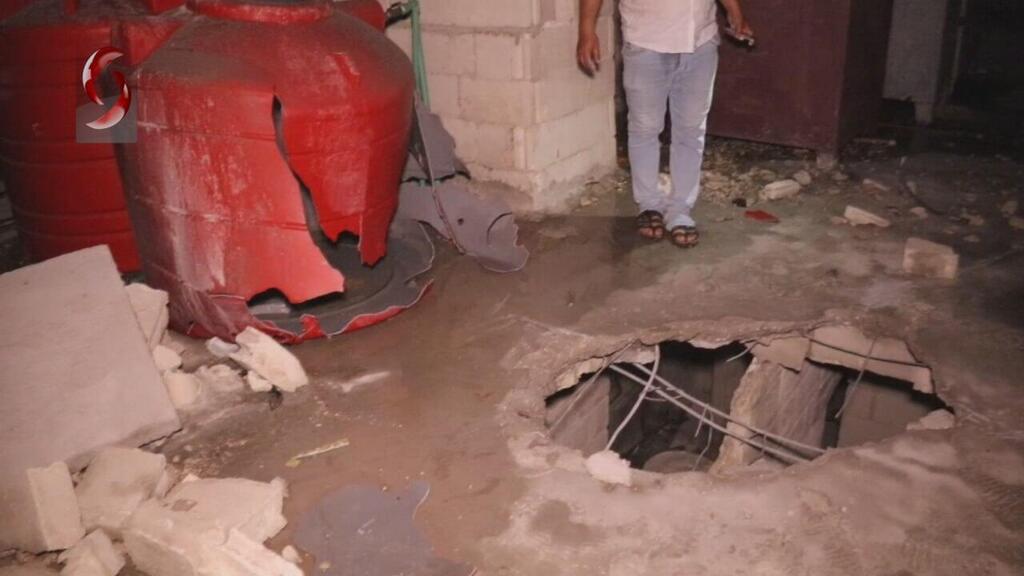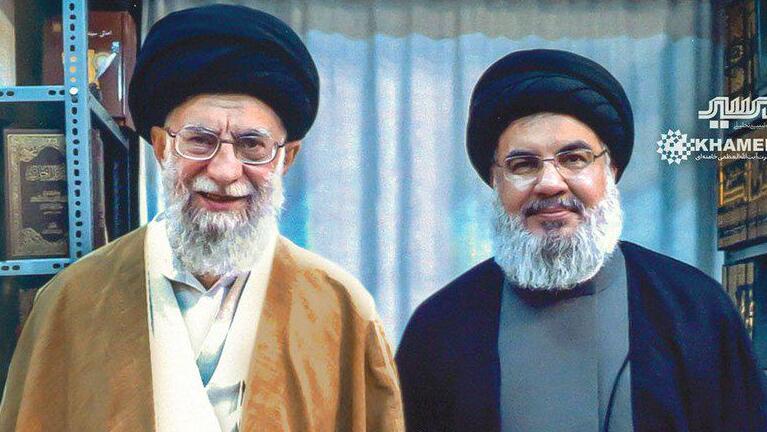Getting your Trinity Audio player ready...
Footage from the strike on Hama
The airstrikes in Syria and Lebanon on Sunday night which are attributed to the Israeli Air Force, are probably related to the IDF's preparations for the possibility of a major campaign in Lebanon. These attacks, which began a little after 11:00 p.m. and continued in four waves until after 02:00 a.m., were irregular by any standard, in the duration, number of targets, and geographical scope.
The abnormal circumstances of this attack which is attributed to Israel is that people were killed during the attack at night in weapon facilities. Usually, the Israel-related attacks target Iranian infrastructure and do not involve Syrian targets so Assad is not tempted to respond. Usually, they damage facilities related to the Iranian Revolutionary Guards Corps, or the militias acting on their behalf, from within Syrian territory, including the activities of Hezbollah in Syrian territory.
Although the identity of the dead and wounded in the nightly attacks is unknown, most of them may be foreigners, possibly even Iranians or Hezbollah operatives. It was reported that some of them are Syrian civilians and soldiers. If the Israeli Air Force conducted this strike, this was likely done based on intelligence that also took collateral damage into account.
Damage to the military "high-tech industry" of Syria and Iran
The strike mainly targeted a facility officially named CERS which stands for the "Center for Scientific Research" but is in fact, Syria's military high-tech weapons industry which has branches all over the country. According to the Alma Research and Education Center that investigates Hezbollah in Lebanon, the site was used for the development and military production of advanced weapons such as precise short-range ballistic missiles of the "Fatah 110" model used by Hezbollah. "This is the heart of the missile precision project of the Iranian-Syrian-Hezbollah cooperation," said the Alma Center.
The full story concerning the facility is the secret war between Israel and Iran for the past decade, since 2014. In essence, Iran is trying to equip Hezbollah and the Shiite militias operating on its behalf from Syria with precision missiles and air defense systems. The alliance is desperately trying to smuggle weapons from Iran to any proxy in Syria and Lebanon, to be used against Israel by any means possible.
Israel thwarts these transfers through what is commonly referred to as "Mabam" (the Hebrew abbreviation for the campaign between wars). The Mabam was successful at times, but according to Brig. Gen. A. L., who was until about a month ago the head of the Air Force's attack array, Israel recently succeeded in 2024 in attacking the smuggling of precision missiles, air defense systems, and precision missile production components that Iran tried to transport by civilian cargo planes to airports in Syria. The IRGC is now more determined than ever to supply precision missiles and air defense systems to Hezbollah, and therefore focus their efforts mainly on smuggling on the ground.
According to foreign publications, both Israel and the U.S. attack convoys that are believed to be smuggling weapons through the corridor that goes from Iran through Iraq into Syria and from there to Lebanon. However, it seems the ability to completely thwart every smuggling attempt through the land routes from Iran to Syria is limited. In addition, not every Iranian weapon in Syria was developed in Iran.
The Iranians have developed a method in which they produce precision missiles and other weapons for Hezbollah in the CERS factories in Syria. They store these missiles in various sites around Homs and Hama, where the route from Iran to Hezbollah passes. They are located very close to the Lebanese border, so Hezbollah stores a significant part of its long and medium-range precision missiles, as well as its sophisticated drones in Syrian territory. When they are ready to be transferred to Lebanon for Hezbollah's use, the IRGC experts help them from Syrian territory.
Russian Navy base prevents additional preemptive strikes
Syrian President Assad has expressed several times his opposition to the IRGC turning his country into a weapons warehouse and factory for Hezbollah and the Shiite militias stationed in Syria. Assad knows that the civil war in Syria has not yet completely subsided and that he does not control large portions of his country, so he tries to avoid a confrontation with Israel that could lead to the fall of his regime.
This may be the reason he demanded the Iranians stop the weapons shipments by air to his airports, which are attacked every time an Iranian weapons shipment lands there. However, the convoys keep attempting to smuggle weapons through the Middle East to Hezbollah. Some senior officials oppose President Assad on this issue, and they are helping the Iranians to continue producing, developing, and possibly also launching missiles from Syrian territory to assist Hezbollah in Lebanon.
The attack on Sunday night was carried out on the destination of the weapon shipment, the CERS facility after it arrived through the smuggling route, instead of hitting specific points along the route that require an extensive air effort. It is plausible that the attack was a preemptive strike designed to deny the IRGC and the Shia militias in Syria capabilities if they seek to wage war against Israel with Hezbollah's help in the event of an escalation.
4 View gallery


Putin leased a Navy base in Syria
(Photo: Sputnik/Valeriy Sharifulin/Pool via REUTERS)
Arab media reported that the echoes of explosions were also heard in the city of Tartus, whose port serves as a Russian base that President Vladimir Putin has leased for decades for the Russian navy in the eastern Mediterranean. According to foreign sources, Israel usually avoids attacking near the Russian Navy ships but it is quite likely that Hezbollah and the Iranians are trying to place their weapons caches near Tartus to gain the protection provided by the Russian presence. This problem can be overcome by using precise air-to-surface missiles, launched from planes flying over the Middle East. The Israeli-Russian coordination to prevent escalation between the countries in Syria works flawlessly.
The operation on Sunday demonstrates once again aerial capabilities, which foreign sources attribute to Israel which is used mainly to erode Iranian capabilities to prevent a possible all-out campaign.








